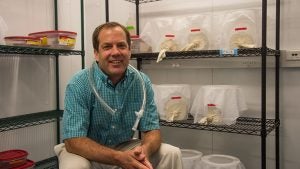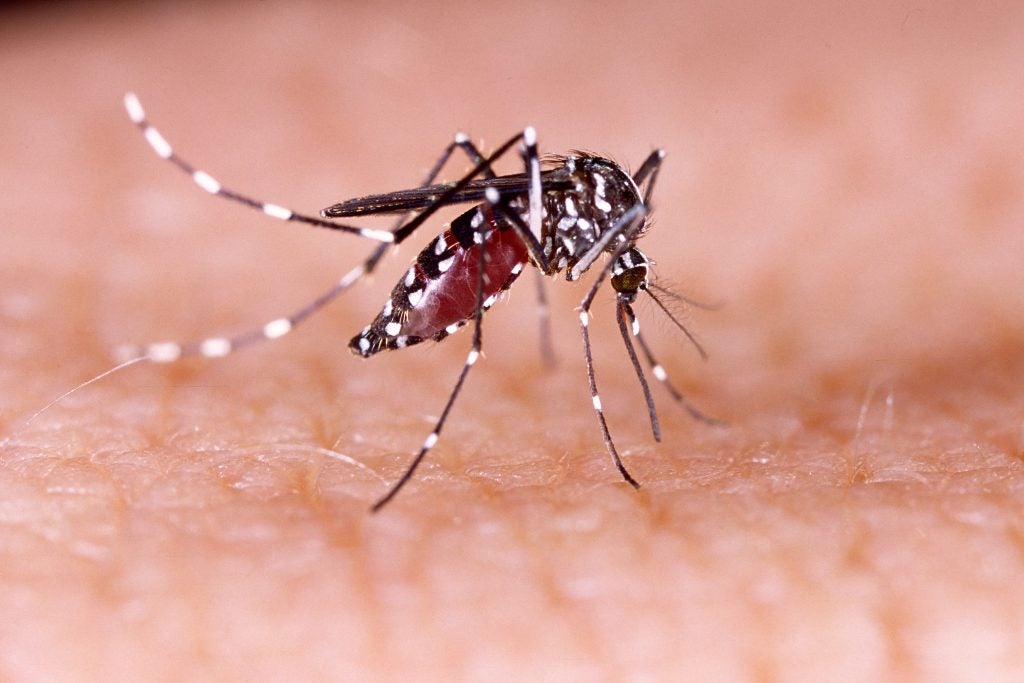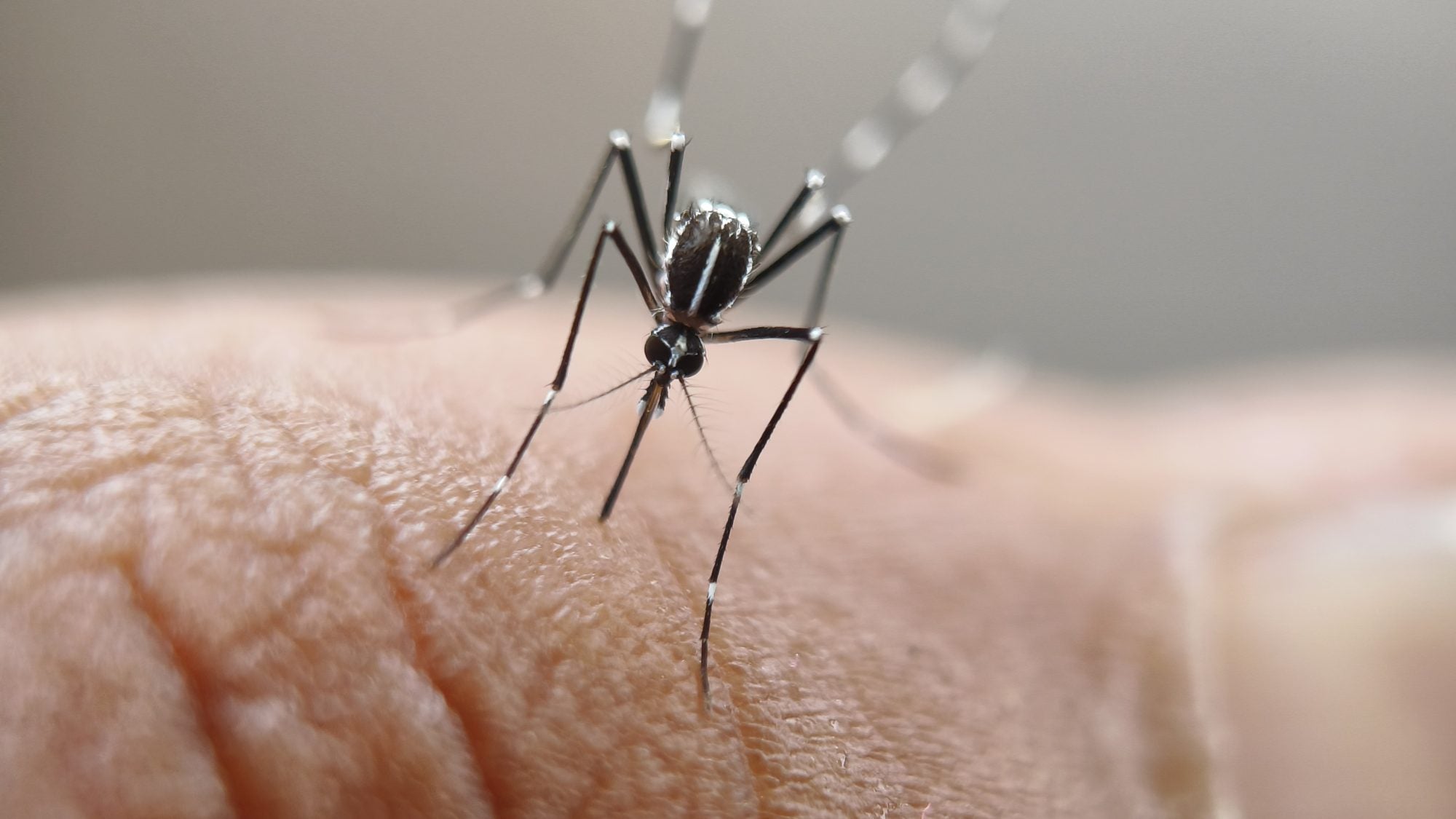Some 4 billion people in the world are at risk of contracting dengue fever, a mosquito-transmitted viral disease with no known cure that can cause high fever, rashes and nausea.
There are over 3,500 species of mosquitoes, but one species, Aedes aegypti, is responsible for almost all types of dengue, said Jacob Crawford (C’03), a Georgetown alumnus who works for Google and researches mosquitoes and vector-borne diseases.

No effective vaccine exists to protect against dengue fever, which is most common in tropical and subtropical regions of the world. This makes managing populations of Aedes aegypti essential to slowing the transmission of dengue and other viral diseases transmitted by the species, such as Zika and chikungunya, Crawford said.
At Google, Crawford works at Debug, an innovative mosquito-control project aimed at suppressing dengue vectors. Recently, he teamed up with biologist Peter Armbruster, Davis Family Distinguished Professor in the College of Arts & Sciences and Crawford’s mentor while he was an undergraduate at Georgetown, to map the evolution of this species of mosquito.

In collaboration with Aedes aegypti experts, the team sequenced the genomes of over 1,200 mosquitoes from 74 locations worldwide to better understand how the Aedes aegypti has evolved and developed a preference for biting humans. Their findings were published in a paper in Science and demonstrated how the native African subspecies colonized the Americas and underwent evolutionary changes that made the mosquito a major vector of viral diseases around the world today.
“An organism’s genome serves as a sort of historical record, showing, for example, when a species’ population size may have changed and documenting when migration between different populations occurred,” Crawford said.
From Animal to Human Feeding
Aedes aegypti was once only found in African forests. They lived in tree holes and fed on wild primates and other animals.
Over time, small pockets of Aedes aegypti, particularly in West Africa, developed a preference for feeding on humans.
By studying over 141 million mutations in the genomes of Aedes aegypti around the world today, Crawford and his team documented how the human-preferring mosquitoes spread to the Americas. The study found that Aedes aegypti in Argentina bore striking genetic similarities to mosquito populations in West Africa. Crawford and his team believe that the species spread to the Americas by stowing away in storage containers, most likely containing fresh water, as part of the Atlantic slave trade.

“One of the really important big-picture implications of this study is that it illustrates how human-mediated transport of container-breeding mosquitoes across the globe can lead to evolutionary changes that have profound human health impacts,” Armbruster said.
In the Americas, Aedes aegypti adapted to feed almost exclusively on humans and breed in artificial water sources. The mosquitoes also adapted to have greater resistance to insecticides, amplifying the threat they pose to public health.
Managing Vector-Borne Diseases
Aedes aegypti have now spread around the world, increasing the risk posed by diseases like dengue. Aedes aegypti is especially common in tropical and subtropical regions but has recently made its way into more temperate climates, including a recently discovered population that is thought to breed in underground habitats in Washington, DC.
Its spread has been especially challenging in Africa, where rapid urbanization coupled with the reintroduction of these evolved mosquitoes has contributed to rising cases of dengue and other vector-borne diseases.
“Across the world, dengue transmission is 50-100 times more common than it was just 50 years ago due primarily to the spread and growth of these human-specialized populations of Aedes aegypti in a rapidly urbanizing world,” Crawford said. “The urbanization of Africa is bringing significant new mosquito-borne disease challenges to public health.”
Crawford hopes the genomic data from his research will help researchers develop new tools to manage the spread of diseases like dengue.
“The [study] will help researchers develop new tools and also enable programs like Debug to accelerate the implementation of sterile Aedes aegypti releases in places that need it the most,” Crawford said. “More broadly, we hope mosquito biologists worldwide will use the dataset to put their mosquito population of interest in a global context or address key questions about the Aedes aegypti biology and genetics.”
For Armbruster, he said working with his former student has been a rewarding experience to see him lead impactful scientific research that pushes the boundaries of their field of study.
“It has been so much fun and so rewarding to interact with Jacob over the extraordinary arc of his career as a scientist. Jacob helped me get my lab up and running when I started as a faculty member at Georgetown, and now he is leading cutting-edge projects that are producing extremely elegant and impactful scientific results,” Armbruster said. “The Science paper is a really impressive piece of work, and it is an exceptional accomplishment by Jacob to pull this ambitious project together.”
